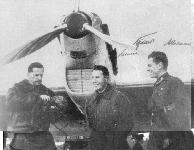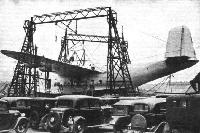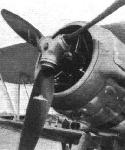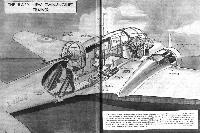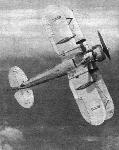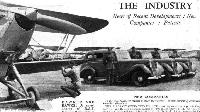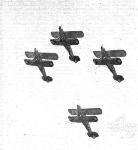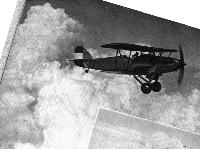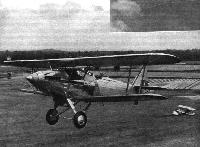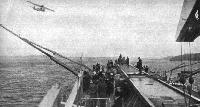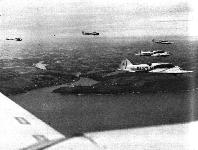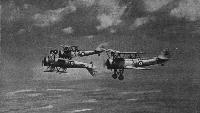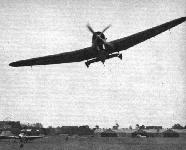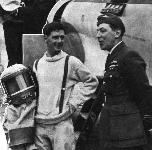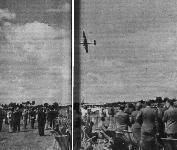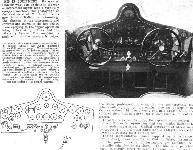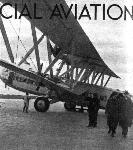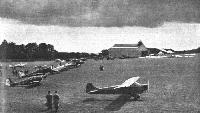Фотографии
-
Регистрационный номер: URSS-N025-1 М.М.Громов, С.А.Данилин, А.Б.Юмашев у самолета АНТ-25. Снимок с автографами пилотов
FARTHEST YET: The three Russians who flew the ANT.25 monoplane 6,650 miles, via the North Pole, from Moscow to California. They are, right to left (and to give them their full honours), Hero of the Soviet Union M.M. Gromov, Engineer of the Third Rank, S. A. Danilin, and Major A. B. Yumashev.Самолёты на фотографии: Туполев, Сухой АНТ-25 / РД - Россия - 1933
-
The Dornier Do. 17 bomber, known in Germany as the "Flying Pencil," and one of the new B.F.W. Me. 109 fighters. Each won its class in the Alpine circuit at respective average speeds of 233.5 and 240.9 m.p.h.
Самолёты на фотографии: Dornier Do.17 - Германия - 1934Messerschmitt Bf.109 / Bf.109B / Bf.109C / Bf.109D - Германия - 1935
-
INCIDENTS at Hatfield last Tuesday: the Bristol Blenheim.
Самолёты на фотографии: Bristol Blenheim - Великобритания - 1936
-
Casual inspection of the new Heinkel fighter, which made an unofficial appearance, suggests the use of a canon in addition to normal armament.
Самолёты на фотографии: Heinkel He-112 - Германия - 1935
-
Регистрационный номер: K4240 INCIDENTS at Hatfield last Tuesday: the H. P. Hampden.
Самолёты на фотографии: Handley Page Hampden / H.P.52 - Великобритания - 1936
-
Регистрационный номер: K5083, K5115 A Hawker pair that aroused much interest, particularly among the foreign visitors - the P.4/34, or Henley, and (hiding behind it) the Hurricane. The Henley light bomber has been adopted by the Air Ministry.
Самолёты на фотографии: Hawker Henley - Великобритания - 1937Hawker Hurricane - Великобритания - 1935
-
Flt. Lt. Staniland, in one of the production Fairey Battles, gives a new force to a line from Virgil. This remarkable photograph was secured by Flight's chief photographer from an accompanying Swordfish flown by F/O F. H. Dixon.
Самолёты на фотографии: Fairey Battle - Великобритания - 1936
-
Регистрационный номер: G-ADHK [2] The lower component of the Short-Mayo composite aircraft being erected in the open at Rochester.
Самолёты на фотографии: Short Mayo Composite (S.20 Mercury and S.21 Maia) - Великобритания - 1938
-
Регистрационный номер: G-ADHJ, G-ADHK [2] Heavier-than-air starting: A sectioned model of the Short-Mayo composite aircraft.
Самолёты на фотографии: Short Mayo Composite (S.20 Mercury and S.21 Maia) - Великобритания - 1938
-
Регистрационный номер: K3012 OUT IN THE COLD, COLD SNOW - : A Special Hart with Perseus sleeve-valve engine, skis and cockpit enclosure on test with the Royal Canadian Air Force. In the foreground is a wing of a recently acquired Northrop Delta.
Самолёты на фотографии: Hawker Hart - Великобритания - 1928
-
The Rotol v.p. airscrew installed on a Mercury-engined Hart.
Самолёты на фотографии: Hawker Hart - Великобритания - 1928
-
Man-power start: Preparing the starting rope, operated by a weight dropping from a tower, for the historic Wright biplane at Pau.
Самолёты на фотографии: Wright Wright III / Wright A / Military Flyer - США - 1905
-
OUT OF THE PAST: A German L.V.G. biplane which played its part at the Hendon Display.
Самолёты на фотографии: LVG C.V / C.VI - Германия - 1917
-
THE R.A.F.'s NEW TWIN-ENGINED TRAINER
Самолёты на фотографии: Airspeed Oxford / AS.10 - Великобритания - 1937
-
Photo taken inside the Industrial Palace at Prague depict the Avia 34 single-seater fighter with 650 h.p. Hispano-Suiza liquid-cooled engine.
Самолёты на фотографии: Avia B-34 - Чехословакия - 1932
-
Navy Day! A scene of suspended animation at a Redland aerodrome during Thursday's storm, which grounded the major portion of the defending air force. On the left are the Heyfords of No. 99 Bomber Squadron with No. 269 General Reconnaissance Squadron's Ansons on the right
Самолёты на фотографии: Avro Anson / Type 652 - Великобритания - 1935Handley Page Heyford / H.P.38 / H.P.50 - Великобритания - 1930
-
Ordered in quantity for the R.A.F., the De Havilland Don advanced trainer is powered with one of the new D.H. Gipsyking inverted vee-twelves.
Самолёты на фотографии: De Havilland Don / D.H.93 - Великобритания - 1937
-
Самолёты на фотографии: De Havilland Don / D.H.93 - Великобритания - 1937
-
The Hawker Henley's cockpit enclosure. Internal bracing protects the pilot in the event of a noseover.
Самолёты на фотографии: Hawker Henley - Великобритания - 1937
-
In the view a number of features of the Gloster Gladiator may be seen to advantage. This machine is of a type which has aroused great interest in the export market. The engine is a Mercury IX and four guns are fitted.
Самолёты на фотографии: Gloster Gladiator - Великобритания - 1934
-
HAWKER AND HAWKS: A smart line-up of R.A.F. Hillman Hawk service cars seen at the Hendon Display.
Самолёты на фотографии: Hawker Fury - Великобритания - 1931
-
Something new in flight aerobatics: Four Furies carry out combined aerobatics and formation changes. In this view the machines are seen in the basic diamond formation.
Самолёты на фотографии: Hawker Fury - Великобритания - 1931
-
An ever-popular item - smoke evolutions. They were performed by five Gauntlets of No. 66 (F.) Squadron.
Самолёты на фотографии: Gloster Gauntlet - Великобритания - 1929
-
THE view shows a Hawker Hind destined for Yugoslavia. This machine differs from the standard R.A.F. Hind in that it is fitted with the Rolls-Royce Kestrel XVI (690 h.p. at 11,000 ft.) which is provided with a central air intake forward of the radiator and a cylindrical oil cooler mounted in a trough on the starboard side of the cowling.
Самолёты на фотографии: Hawker Hind - Великобритания - 1934
-
The view shows a Portuguese Hind just after taking off from Brooklands. This model has a Kestrel V engine and is similar to the machines which equip several R.A.F. Squadrons.
Самолёты на фотографии: Hawker Hind - Великобритания - 1934
-
The Hectors of No. 13 (A.C.) Squadron seen above the D. H. Albatross, whose size easily dominated the machines in the "New and Experimental" park. This 91, to use its series number, is to be used by the Air Ministry for Atlantic experiments.
Самолёты на фотографии: De Havilland Albatross / D.H.91 - Великобритания - 1937Hawker Hector - Великобритания - 1936
-
Регистрационный номер: K8575 FOR LIGHT RECONNAISSANCE: The first of a batch of the new Fairey Sea Foxes, which have the Napier Rapier VI - the 370 h.p. (at 4,750 ft.) sixteen-cylinder "small sister" of the H-type Dagger. The Sea Fox is specially designed for arduous catapult work, and to that end is liberally furnished with aids for (and defence against) deck crews.
Самолёты на фотографии: Fairey Seafox - Великобритания - 1936
-
Looking aft from a Singapore III taxi-ing in from a patrol: an unusual impression by Flight's photographer during a trip in one of Redland's reconnaissance aircraft
Самолёты на фотографии: Short Singapore III / S.19 - Великобритания - 1934
-
Preparing to catapult a Supermarine Walrus amphibian at the R.A.E., Farnborough. This catapult is of the expanding-ram type, without sheaves and wire ropes.
Самолёты на фотографии: Supermarine Walrus/Seagull V - Великобритания - 1933
-
In this picture the Do. 18 is seen circling the Ostmark after being catapulted off. The latest D.L.H. mothership Friesenland carries a catapult capable of launching aircraft up to 37,000 lb. gross weight.
Самолёты на фотографии: Dornier Do.18 - Германия - 1935
-
Регистрационный номер: D-ABYM The third Do 18, D-ABYM Aeolus, mounted on the catapult of a depot ship.
Taken at Azores on board the D.L.H. catapult ship Schwabenland (on board the mother ship Ostmark ???), this photograph of the Dornier Do.18 Aeolus (two Junkers Jumo diesels) probably gives a better idea of its hull lines than any of those previously published. Unfortunately for those interested in comparisons, the German company has been refused permission to use the Irish Free State for its North Atlantic experiments.Самолёты на фотографии: Dornier Do.18 - Германия - 1935
-
Регистрационный номер: K6207 A STRIKING FORCE: Normally the work of the General Reconnaissance squadrons is to scour the seas round the coasts of Britain and report the presence of enemy ships. During the recent exercises on the South Coast the Ansons of three G.R. squadrons were used as bombers, and here one of these squadrons is seen off the coast of Cornwall flying out to attack the Blue Fleet
Самолёты на фотографии: Avro Anson / Type 652 - Великобритания - 1935
-
Регистрационный номер: K5178 [3] The new Blackburn fleet fighter dive bomber is seen in the picture diving with flaps down to retard its speed
Самолёты на фотографии: Blackburn Skua / B-24 - Великобритания - 1937
-
Регистрационный номер: K5178 [3] The view shows the general layout of this interesting machine.
Самолёты на фотографии: Blackburn Skua / B-24 - Великобритания - 1937
-
Регистрационный номер: K5178 [3] Самолёты на фотографии: Blackburn Skua / B-24 - Великобритания - 1937
-
Inspired by the spectacle of a "next war" air battle at the R.A.F. Display - an impression, specially drawn for Flight by F. Gordon-Crosby, of Handley Page Harrow heavy bombers, flying high over enemy territory, being attacked by hostile fighters. The interceptors are seen diving with a view to zooming from beneath. But with fifty guns to a squadron the Harrows are by no means "cold meat" for a defensive force.
Самолёты на фотографии: Handley Page Harrow / H.P.54 - Великобритания - 1936
-
Регистрационный номер: K3363, K3364, K3365 Tens of thousands saw from below these three Tutors from the Central Flying School. In this view of them, taken at their own level, the attitudes of the machines are more clearly brought out. Note that in the inverted position the leader's machine has to be at a much greater angle to obtain the necessary lift.
Самолёты на фотографии: Avro Tutor/Sea Tutor/Prefect / Type 621/646/626 - Великобритания - 1929
-
RIGHT WAY UP! During a recent visit to the C.F.S., Flight's photographer inveigled these three pilots into a "close-up." Since the Hendon Display crowd almost saw their faces as they flew their Avro Tutors inverted at low altitude, we make no apology for departing from the Hendon "no limelight" convention. Left to right : Flt. Lts. Mermagen and Stephenson and Flt. Sergt. Scragg.
Самолёты на фотографии: Avro Tutor/Sea Tutor/Prefect / Type 621/646/626 - Великобритания - 1929
-
Регистрационный номер: K4879 [4] The triumphant Bristol 138 monoplane is stationed at the R.A.E., Farnborough, where it is seen flying here.
Самолёты на фотографии: Bristol Type 138A - Великобритания - 1936
-
Регистрационный номер: K4879 [4] One of the least encouraging factors to Flt. Lt. Adam must have been his glimpse, on entering the cockpit, of the emergency instructions inscribed on the fuselage of the Bristol.
Самолёты на фотографии: Bristol Type 138A - Великобритания - 1936
-
Регистрационный номер: K4879 [4] Flt. Lt. Adam is insinuating himself into the pressure suit
Самолёты на фотографии: Bristol Type 138A - Великобритания - 1936
-
Регистрационный номер: K4879 [4] Flt. Lt. Adam is seen discussing chances with Wing Cdr. J. W. Woodhouse.
Самолёты на фотографии: Bristol Type 138A - Великобритания - 1936
-
Mechanisation: A De Havilland Queen Bee wireless-controlled target aeroplane is catapulted, pilotless, from H.M.S. Neptune.
Самолёты на фотографии: De Havilland Queen Bee / D.H.82B - Великобритания - 1935
-
It is seldom that the aerial photographer is fortunate enough to enjoy atmospheric conditions that will allow such perfection of detail as is seen above. Shoreham, Sussex, is the ground subject, and the machine is a Jersey Airways D. H. 86.
Самолёты на фотографии: De Havilland Express Air Liner / D.H.86 - Великобритания - 1934
-
Two views of the interior of the Allied Airways' 86B, showing the disposition of the special equipment in "radio alcove" behind the control cabin. The picture on the right is actually the cabin wall continuation of that on the left, which shows the partition wall.
Самолёты на фотографии: De Havilland Express Air Liner / D.H.86 - Великобритания - 1934
-
A Dragonfly interior as provided for H.H. The Maharaja of Indore
Самолёты на фотографии: De Havilland Dragonfly / D.H.90 - Великобритания - 1935
-
Регистрационный номер: VT-AIE Самолёты на фотографии: De Havilland Dragonfly / D.H.90 - Великобритания - 1935
-
One of the two D.H. Albatross machines which have been ordered by the Air Ministry for transatlantic experiments. Their normal cruising speed is in the region of 210 m.p.h. at 10,000 ft.
Самолёты на фотографии: De Havilland Albatross / D.H.91 - Великобритания - 1937
-
INCIDENTS at Hatfield last Tuesday: the De Havilland Albatross doing a steep bank against two of its engines;
Самолёты на фотографии: De Havilland Albatross / D.H.91 - Великобритания - 1937
-
Регистрационный номер: K5604 [2] Самолёты на фотографии: Gloster F.5/34 - Великобритания - 1937
-
Регистрационный номер: K5604 [2] The Gloster F.5/34 single-seater fighter is one fine example of 1937 military prototypes. The Gloster was designed for a Mercury or Perseus radial.
Самолёты на фотографии: Gloster F.5/34 - Великобритания - 1937
-
"Archie" added to the fun with blank ammunition. In this picture he is seen with some Hawker Demons in the background.
Самолёты на фотографии: Hawker Demon - Великобритания - 1932
-
The Miles-Rolls-Royce advanced trainer-general-purpose-fighter-bomber-reconnaissance monoplane does about 290 m.p.h. with a 690/750 h.p. fully supercharged Kestrel XVI.
Самолёты на фотографии: Miles Kestrel M.9 / Master I M.9A - Великобритания - 1937
-
Самолёты на фотографии: Miles Kestrel M.9 / Master I M.9A - Великобритания - 1937
-
RECIPROCITY: Mr. G. de Havilland, the winner, does the handshaking act with Mr. Henshaw (in the Mew Gull) for the newspaper photographers' benefit at Cardiff.
Самолёты на фотографии: Percival Mew Gull - Великобритания - 1934
-
Alex Henshaw, with the Mew Gull, added another line to his long list of "fastest times" by averaging 208 m.p.h. He finished sixth.
Самолёты на фотографии: Percival Mew Gull - Великобритания - 1934
-
Самолёты на фотографии: Percival Vega Gull / K.1 - Великобритания - 1935
-
The Percival Vega Gull demonstrating its slow-flying capabilities with flaps down
Самолёты на фотографии: Percival Vega Gull / K.1 - Великобритания - 1935
-
Регистрационный номер: G-ADHM [4] "Caledonia" over New York
Самолёты на фотографии: Short Empire / S.23 - Великобритания - 1936
-
Регистрационный номер: G-AETW INCIDENTS at Hatfield last Tuesday: Mr. J. Lankester Parker is demonstrating the Short Empire boat Calpurnia.
Самолёты на фотографии: Short Empire / S.23 - Великобритания - 1936
-
Регистрационный номер: G-ADHM [4] Самолёты на фотографии: Short Empire / S.23 - Великобритания - 1936
-
Регистрационный номер: G-ADHM [4] Another view of Caledonia, seen in July 1937 at Foynes.
Самолёты на фотографии: Short Empire / S.23 - Великобритания - 1936
-
Регистрационный номер: G-ADVC The Sikorsky is seen from under the wing of an Empire flying boat, Courtier.
Самолёты на фотографии: Short Empire / S.23 - Великобритания - 1936Sikorsky S-42 Clipper - США - 1934
-
Регистрационный номер: G-ADHM [4] A remarkable photograph of Caledonia taken just as she was about to "unstick" at the start of a radio test flight from Southampton Water shortly before leaving for Foynes, and, ultimately Newfoundland
On July 6th the Imperial Airways Empire flying boat "CALEDONIA" completed the first East to West commercial survey flight across the North Atlantic.Самолёты на фотографии: Short Empire / S.23 - Великобритания - 1936
-
Регистрационный номер: G-ADNO RECIPROCITY: Mr. Henshaw, the second man home, swings Mr. G. de Havilland's T.K. airscrew before the start at Heston
Самолёты на фотографии: De Havilland Technical School T.K.2 - Великобритания - 1935
-
Регистрационный номер: G-AENU Самолёты на фотографии: Foster Wikner Wicko - Великобритания - 1936
-
The installation of the 65 h.p. flat four, air-cooled Praga D engine in the Praga E-115 is unusual and interesting.
Самолёты на фотографии: Praga E-114 Air Baby / E-115 / E-117 - Чехословакия - 1934
-
Самолёты на фотографии: Bloch MB.220 - Франция - 1936
-
Регистрационный номер: D-AJEY ATLANTIC DEPOT: View of the Friesenland, the new D.L.H. catapult ship which will be stationed at the Azores. The photograph also shows the Jumo-engined Blohm and Voss seaplane, Nordwind, which is interesting as a possible transatlantic type, being hoisted on board.
Самолёты на фотографии: Blohm und Voss Ha.139 - Германия - 1936
-
Gerd Achgelis covers the aerodrome with smoke during his low-altitude aerobatic work in a Focke-Wulf Stieglitz.
Самолёты на фотографии: Focke-Wulf FW.44 Steiglitz - Германия - 1932
-
SPAR OF A CLIPPER: A spar for the 152-foot wing of the 72-passenger Boeing Pan American Clipper (four two-row Cyclones) compared with that of a P-26A pursuit machine. The Clipper should be finished late this year. It will weigh 82,000 lb. - about twice as much as an Empire boat.
Самолёты на фотографии: Boeing Boeing 314 Clipper - США - 1938
-
Регистрационный номер: NC16736 A photograph of the Sikorsky S.42B taken at Southampton after the crossing
Самолёты на фотографии: Sikorsky S-42 Clipper - США - 1934
-
ATLANTIC AIDS: The control cabin of Clipper III. In the centre can be seen the Sperry panel, automatic pilot controls and r.p.m. indicators, while on either side are identical panels mounting the essential flying instruments. Below the centre panel can be seen the new Sperry Gyro-Mag compass and the engine controls are mounted in the roof. Across the centre is the rubber band for aileron parking.
Самолёты на фотографии: Sikorsky S-42 Clipper - США - 1934
-
"Clipper III"
Самолёты на фотографии: Sikorsky S-42 Clipper - США - 1934
-
THIS IS EQUIPMENT: By way of showing what can be done in the way of instrument layout with a very fully equipped machine, this photograph of the dashboard of Mr. Leslie Irvin's new Stinson Reliant is interesting. The placings of the instruments and controls are shown in the key below, those applying to the engine operation being indicated by letters and the others by figures.
Самолёты на фотографии: Stinson Reliant - США - 1933
-
Регистрационный номер: G-AAXC "HERACLES," best known of Imperial Airways' H.P. 42's, last week celebrated her 1,000,000th mile in the air.
Самолёты на фотографии: Handley Page H.P.42 / H.P.45 - Великобритания - 1930
-
An idea of the range of vision provided for the pilot of the Cub may be gathered from this view, which, however, does not show how the starboard side can be opened right up for summer flying.
Самолёты на фотографии: Taylor Cub - США - 1931
-
Регистрационный номер: G-AEXT The start: P. B. Elwell's Taylor Cub is seen getting away, and Alington's Dart Kitten is next in the line.
Самолёты на фотографии: Dart Kitten - Великобритания - 1937Taylor Cub - США - 1931
-
The compressed air engines are at work. A cloud of steam rises overhead. The "Virginia" has already lifted off the ground, slightly right wing down owing to the side wind. The tail is clear of the trolley, which has stopped running. We rejoice that we cannot reproduce the noise of the engines.
Самолёты на фотографии: Vickers Virginia - Великобритания - 1922
-
Something going to happen? Morane 225s at Villacoublay.
Самолёты на фотографии: Morane-Saulnier MS.225 - 227 / MS.275 - Франция - 1932
-
Регистрационный номер: F-AMPD The scene near the Dubendorf terminal building on the opening day of the meeting. The Farman in the middle distance brought over Mlle. Deutsch de la Meurthe. On Sunday some 75,000 people were at the airport and Swissair had to turn joyriders away.
Самолёты на фотографии: Farman F.190 / F.390 - Франция - 1928
-
Capt. Percival Phillips and Mrs. Phillips in front of the victorious Lynx Avro
Самолёты на фотографии: Avro Avro 504N - Великобритания - 1920
-
Регистрационный номер: G-GAAA [2] INTERNATIONAL: A scene at the Wasserkuppe on the first day of the International Gliding Competition. In the foreground can he seen Mrs. Ronald Price at the wing tip of her King Kite, while behind is the Hjordis, which is being handled by Messrs. P. A. Wills and J. C. Neilan.
Самолёты на фотографии: Buxton Hjordis - Великобритания - 1935Slingsby T.9 King Kite - Великобритания - 1937
-
Регистрационный номер: G-GAAA [2] Mr.P.A. Wills in the Hjordis, with his brother Richard who acted as interpreter, in attendance.
Самолёты на фотографии: Buxton Hjordis - Великобритания - 1935
-
Регистрационный номер: ZS-AIY FOR AIR SURVEY: On Thursday of last week the B.A. Double Eagle, which has been specially laid out for survey work, left Hanworth for Johannesburg. It is being flown out by Mr. Brian Russell, the chief pilot of the Aircraft Operating Company of Africa.
Самолёты на фотографии: British Aircraft BA.IV Double Eagle - Великобритания - 1936
-
Регистрационный номер: OK-TBZ Although its Walter Major-4 engine is rated at only 130 h.p., the Zlin XIII two-seater "looks every mile" of the 200 m.p.h. claimed for it. Incidentally, its native Czechoslovakia appears amazingly Sussex-like in this photograph.
Самолёты на фотографии: Zlin Z-XIII - Чехословакия - 1937
-
Mr. G. O. Smith in one of the new King Kites.
Самолёты на фотографии: Slingsby T.9 King Kite - Великобритания - 1937
Статьи
- Flight
- Flight Advertisements
